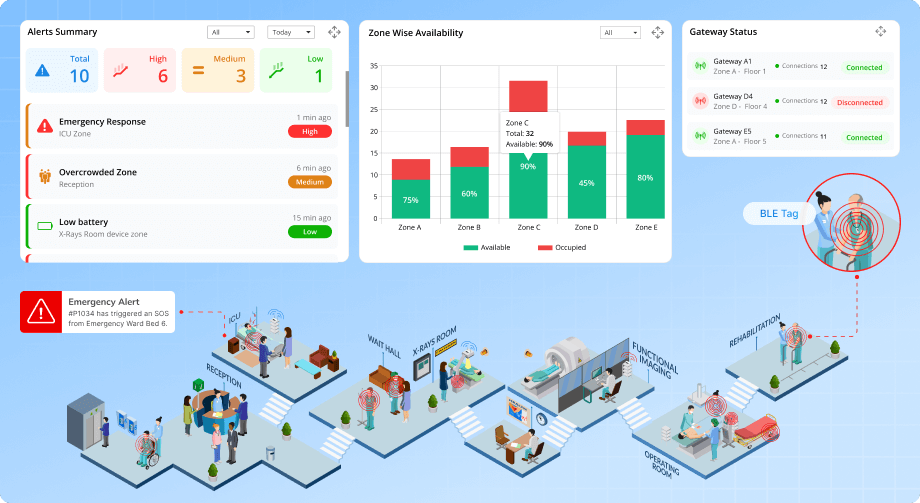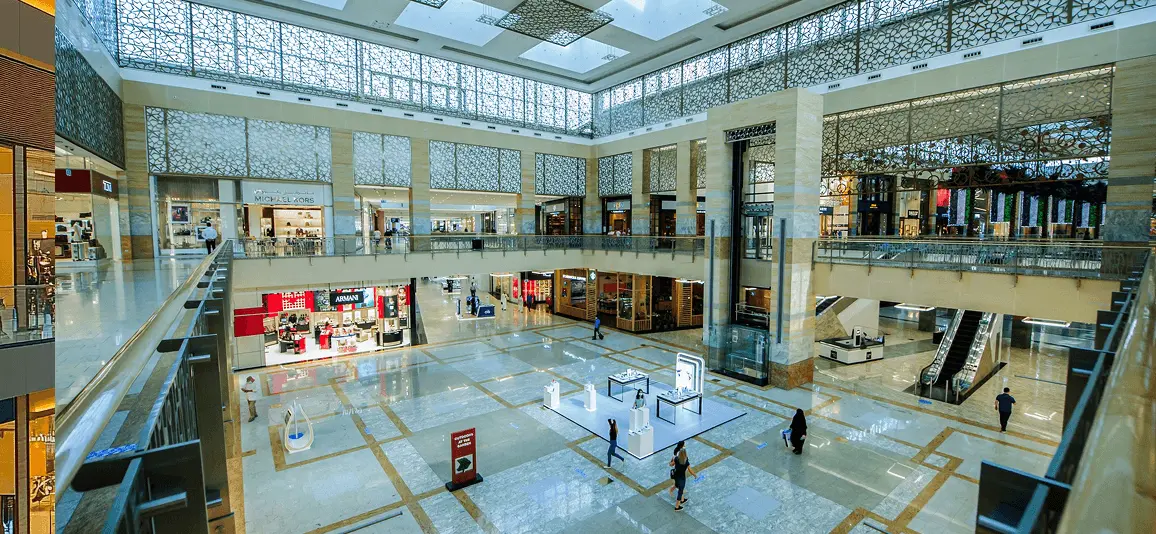Hospitals and healthcare centers are high-pressure environments where safety, speed, and coordination are critical. With multiple departments, large staff teams, and constant patient movement, managing indoor operations in real time becomes a major challenge. These facilities demand systems that support continuous monitoring, faster decision-making, and seamless communication across zones.
Making Hospital Operations Smoother with Indoor Tracking
Introduction
Challenges
- Locating patients or staff during emergencies is time-consuming: In multi-floor hospitals, it becomes difficult to find patients or staff without a real-time tracking system.
- Limited visibility in sensitive zones like ICUs and isolation wards: Movement in critical areas needs to be monitored for hygiene, safety, and operational control.
- Delayed response in emergency situations: Staff may not be aware when a patient needs urgent help, especially in large or crowded hospital facilities.
- No accurate log of patient or staff movement: Manual tracking fails to provide zone-wise visit records or duration of stay in specific departments.
- Non-compliance with safety and audit requirements: Without digital records, hospitals face difficulty in producing accurate reports for audits or quality checks.
- Lack of SOS alert mechanism for patients: In emergency situations, patients have no quick way to signal distress or request urgent help from the medical team.
Solution with Indoor Tracking Software
- BLE-based tracking tags for patients and staff: Each individual is assigned a BLE tag, allowing real-time tracking across hospital zones and floors.
- Live dashboard with zone-wise location visibility: Admins can monitor which patient or staff is in which zone/floor, updated in real time.
- Zone visit summary and duration tracking: The system records entry/exit time, total time spent in departments (like ICU, ward, lab), and movement patterns.
- Gateway status monitoring: Ensures that gateways installed in different locations (floors, wards, buildings) are online and functional.
- Alert system for critical events: Triggers alerts for conditions like
- Zone in/out entry
- Overcrowding
- Low signal
- Device battery low or offline status
- SOS feature for emergency alerts:
- Patients are given devices with an SOS button.
- In emergencies, pressing the button immediately alerts monitoring staff via the dashboard and alert reports.
- The system logs the exact zone and floor from where the SOS was raised, enabling rapid medical response.
Results Achieved
- Improved emergency response: SOS alerts help staff act immediately, minimizing critical delays in patient care.
- Real-time location awareness: Enables faster decisions by knowing exactly where each patient and staff member is at any moment.
- Better safety and accountability: Track and validate staff presence in high-care zones and ensure protocols are followed.
- Automated reports for compliance: Provides downloadable reports on zone visits, duration, alerts, and device activity—helpful for audits and hospital management.
- Efficient operations and workload management: Helps assign and monitor staff movement, improving overall productivity.
- Enhanced patient care and satisfaction: Patients feel safer knowing they can reach help instantly with the SOS button, especially during night hours or in isolated wards.
Let’s Move Forward, Together
Share your details and we’ll guide you from here.




